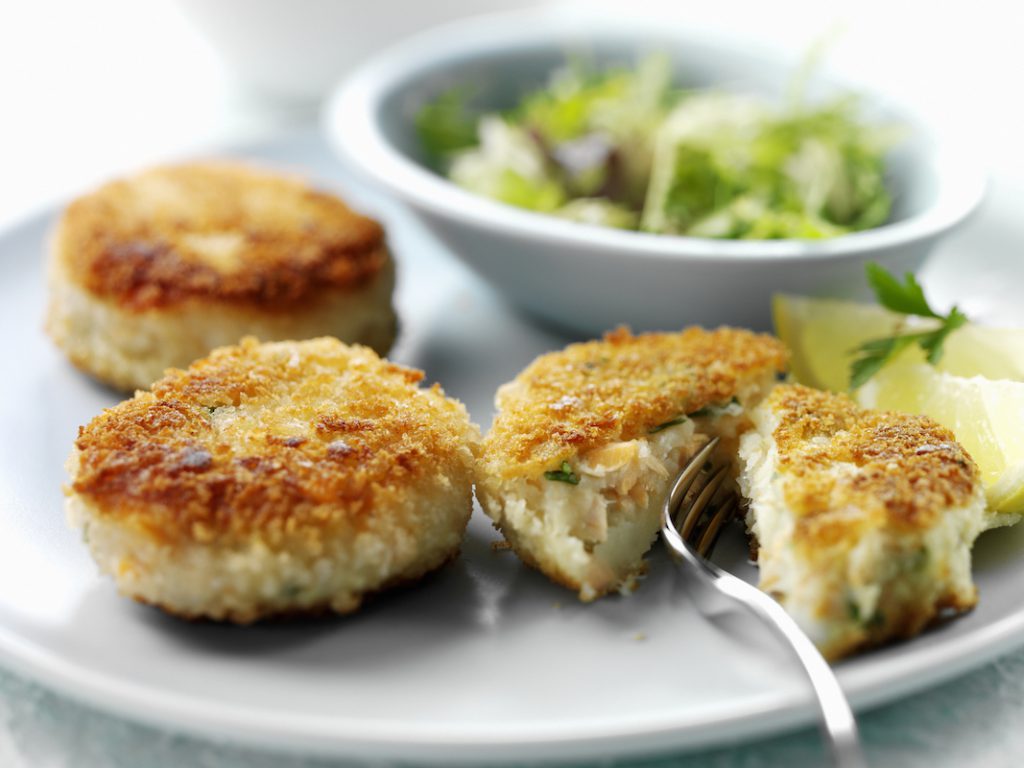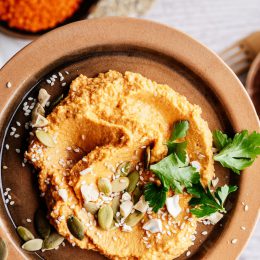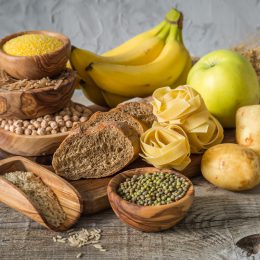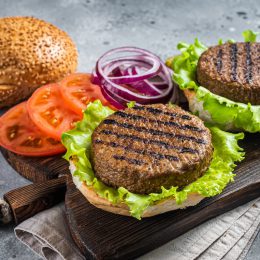How to Choose the Healthiest Seafood (for You and the Environment)
Get hooked on better catches that will give you tidal wave of nutrition and sustainability.

You’ve no doubt heard about the health virtues of fish. And the hype is real. Fish large and small have a lot going for them. Like other animal foods, fish and seafood are great sources of protein. They’re also packed with healthy fats and key vitamins and minerals that older adults need (and that are hard to find in other foods).
That said, there are some downsides to seafood. Some fishing practices can take a toll on the environment. And fish can be contaminated with chemicals from polluted waters. For example, a chemical called methylmercury is common in some large fish like tuna. This chemical can be harmful to pregnant women and young children.
Still, the benefits of eating fish seem to outweigh the risks of contaminants, especially for older adults. A 2024 study in the American Journal of Clinical Nutrition found that eating fish was linked to better cognitive function in adults over 60. And while it did lead to higher blood levels of contaminants like methylmercury, it didn’t seem to have a negative impact on their health.
The current Dietary Guidelines for Americans (DGAs) recommend that adults eat at least 8 ounces of fish (or two servings) each week. But picking out the healthiest and most sustainable fish at the store is no simple task. And the high cost of seafood is a barrier for many people, too.
So which seafood should you go fish for? We’ve rounded up our top five catches that are healthy, affordable and sustainable — plus share an easy recipe for fish cakes.
Healthy eating and fitness go together! SilverSneakers classes and events are happening daily at participating gyms, online through SilverSneakers LIVE, and at community centers near you. Activate your free online account to get started.
1. Wild-Caught Alaskan Salmon
When it comes to protein foods like beef and pork, lean is the way to go. But with fish, fattier options, like salmon, are best. That’s because the fat in fish is made up mostly of unsaturated fats, which are good for your heart.
In particular, salmon is packed with omega-3 unsaturated fats. These mega-healthy fats are linked to many benefits for heart health such as lowering triglycerides and raising HDL (good) cholesterol. They may help lower your risk of stroke, too. One recent study looked at blood levels of omega-3 fats in nearly 200,000 adults. It found that people with the highest levels had up to a 17% lower risk of stroke compared to those with the lowest levels.
You’ll find lots of salmon options at the grocery store. Fresh, frozen and canned salmon all deliver the same beneficial nutrients. And they’re all typically low in mercury and other contaminants. If you’re looking for an environmentally friendly option, go for wild-caught Alaskan salmon or farmed Atlantic salmon.
2. Rainbow Trout
Rainbow trout looks very similar to salmon (you may have a hard time telling them apart at the fish counter). If you’re looking for a fatty fish filet to serve up for dinner, don’t overlook rainbow trout — it’s often cheaper than salmon, but delivers the same health-boosting nutrients. It has a milder flavor than salmon, too, so it’s great choice if you find salmon to be a bit too “fishy.”
Unless you catch it yourself, the rainbow trout you eat will likely come from a farm. But rainbow trout is farmed in a sustainable way that gets a green light from seafood watch programs. Grilled, seared in a frying pan, or roasted in an oven, you can cook rainbow trout fillets exactly the way you would salmon.
3. Canned Sardines
These small but mighty fish deliver impressive amounts of omega-3 fats (gram for gram more than salmon). In fact, a paper in the journal Frontiers in Nutrition argues that the heart-healthy nutrition matrix of omega 3s plus other key vitamins and minerals makes canned sardines a practical alternative to taking omega-3 supplements.
Sardines can also help support bone health. They’re a good source of hard-to-get vitamin D. And the soft (totally edible) bones in whole sardines give you a boost of calcium. That combo of vitamin D + calcium is crucial for maintaining bone health.
Beyond nutrition, canned sardines have a lot going for them. Like other small fish, sardines are low in contaminants and are generally a sustainable option. Plus, they can cost way less than other seafood choices. And they’re easy to keep on hand since they’re shelf-stable.
Brands of canned sardines can vary greatly in taste, some stronger than others. Try a few to see what pleases your taste buds most. Add canned sardines to sandwiches, salads, and pasta dishes. Or try our recipe for sardine fish cakes below!
4. Mussels
It’s easy to overlook shellfish when exploring your seafood options. They can feel like a lot of work for not a lot of meat. But they have lots of nutritional goodies to offer in a small package. Mussels are a good source of selenium and vitamin B12 — two important nutrients for older adults.
Mussels are also one of the most sustainable seafood options. They filter and clean the water that they are farmed in which can benefit the environment around them. And they’re affordable too, at just two to three dollars per pound.
If you’ve never cooked mussels before, here are a few tips to get started:
- Plan on buying 1 pound of mussels for each person serving.
- Mussels can be kept for a couple of days in the refrigerator. To store, place them in a bowl and cover with a damp paper towel.
- Toss out any mussels that are open and don’t close when you tap them. This means that they’re dead and shouldn’t be eaten.
- Steam muscles in a little bit of liquid (you could use broth, wine, coconut milk, tomato juice, etc.) and aromatics like onions, garlic, ginger, chiles, herbs, and more. Serve your steamed mussels with a crusty bread to dip in the cooking liquid.
- Mussels take only a few minutes to cook. They’re done when all of the mussels have popped open. Toss any that don’t pop open after cooking.
5. Pickled Herring
A popular part of the healthy Nordic Diet, Atlantic herring is a worthwhile catch of the day. Ounce for ounce it’s one of the most omega-dense fish you can eat. And it reels in plenty of vitamin D, vitamin B12, selenium, phosphorus, and niacin. Plus, herring is lower in contaminants than some other popular options like tuna. And it’s easier on the wallet compared to pricey catches like halibut and salmon.
Jars of pickled herring are convenient — they’re shelf-stable, affordable, and require no cooking. Take a cue from the Danes and try pickled herring on a smørrebrød, which is a traditional open-faced sandwich. Tame the fishy flavor with a schmear of cream cheese mixed with fresh dill, capers, lemon zest, and black pepper. Top slices of toasted dark rye bread or rye crackers with this cream cheese mixture, pieces of pickled herring, sliced cucumber and roasted red pepper.
Fish Cakes with Tomato-Pepper Sauce
These healthier fish cakes are simple to prepare, taste great, and bring plenty of nutrition onboard.
Subscribe to our newsletter
It's quick and easy. You could be one of the 13 million people who are eligible.
Already a member? Click to discover our 15,000+ participating locations.
Follow Us
Makes 4 Servings
Ingredients
Fish Cakes:
- 2 cups cooked cubed sweet potato
- 3 cans water packed sardines, drained
- 1 egg, lightly beaten
- 1/2 cup bread crumbs
- 1/2 cup chopped red onion
- Zest and juice of 1 lemon
- 1 tablespoon fresh thyme (or 1 teaspoon dried thyme)
- 1/4 teaspoon salt
- 1 tablespoon oil
Sauce:
- 1/3 cup dry-packed sun-dried tomatoes
- 1/2 cup jarred roasted red pepper
- 1 garlic clove
- 1/4 teaspoon red pepper flakes
Directions
- In a large bowl, mash together sweet potato and sardines. Stir in egg, bread crumbs, red onion, lemon zest, lemon juice, thyme and salt. Shape the mixture into four patties.
- Make the sauce: place sun-dried tomatoes and 1/2 cup boiled water in a blender container and let tomatoes soak for at least 15 minutes. Add roasted red pepper, garlic, and pepper flakes and blend until smooth.
- Cook the fish cakes: Heat oil in a frying pan over medium-high heat. Add the fishcakes and cook for 4-5 minutes each side, until golden brown crust forms.
- Serve fish cakes topped with red pepper sauce.
Recipe courtesy of Matthew Kadey, R.D.
See our sources:
Guide to sustainable seafood: Monterey Bay Aquarium Seafood Watch
Fish consumption and cognitive function: The American Journal of Clinical Nutrition
Seafood intake recommendations: 2020-2025 Dietary Guidelines for Americans
Barriers to seafood consumption: British Journal of Nutrition
Omega-3 fats and stroke risk: Stroke
Sardines vs. fish oil supplements: Frontiers in Nutrition
Health benefits and environmental impact of farmed mussels: Nutrients
Activate Your FREE SilverSneakers Online Account
Get hundreds of free SilverSneakers On-Demand videos and stay in touch with us by creating your free online account. You don’t have to be a SilverSneakers member to get on-demand workout videos, health and fitness tips from SilverSneakers, and more.
SilverSneakers members can go to thousands of nationwide gyms and fitness locations, plus take SilverSneakers LIVE online classes led by specially trained instructors and designed for all fitness levels and abilities – at no additional cost. If you have a Medicare Advantage plan, it may include SilverSneakers. Check your eligibility here.
Already a member? Get your SilverSneakers member ID, search for locations near you, and all the health and wellness resources you need by logging in to your online member account here.





